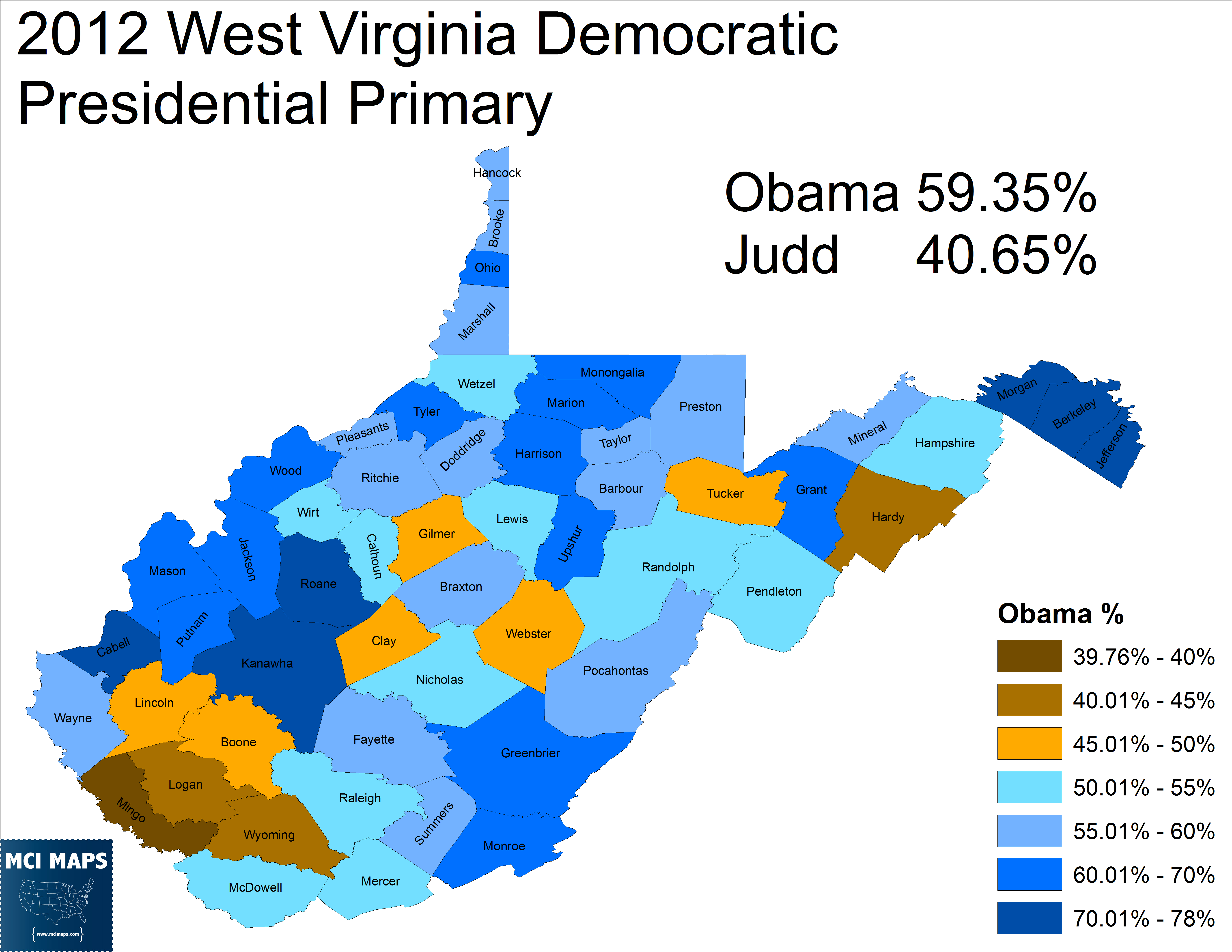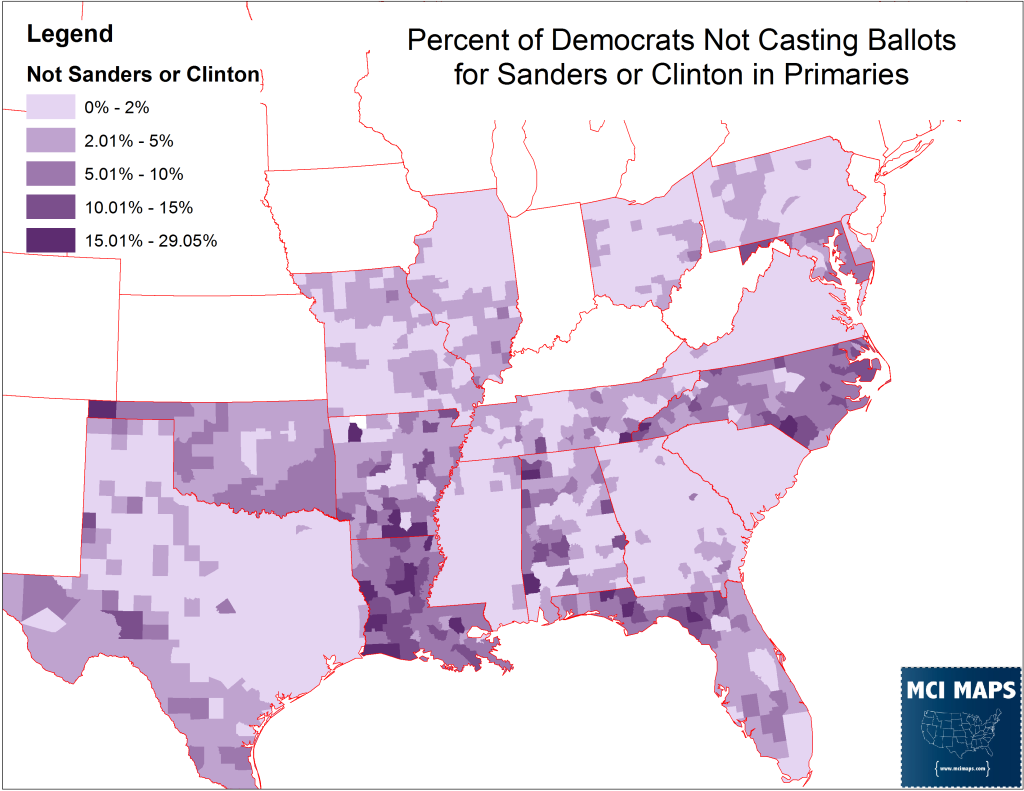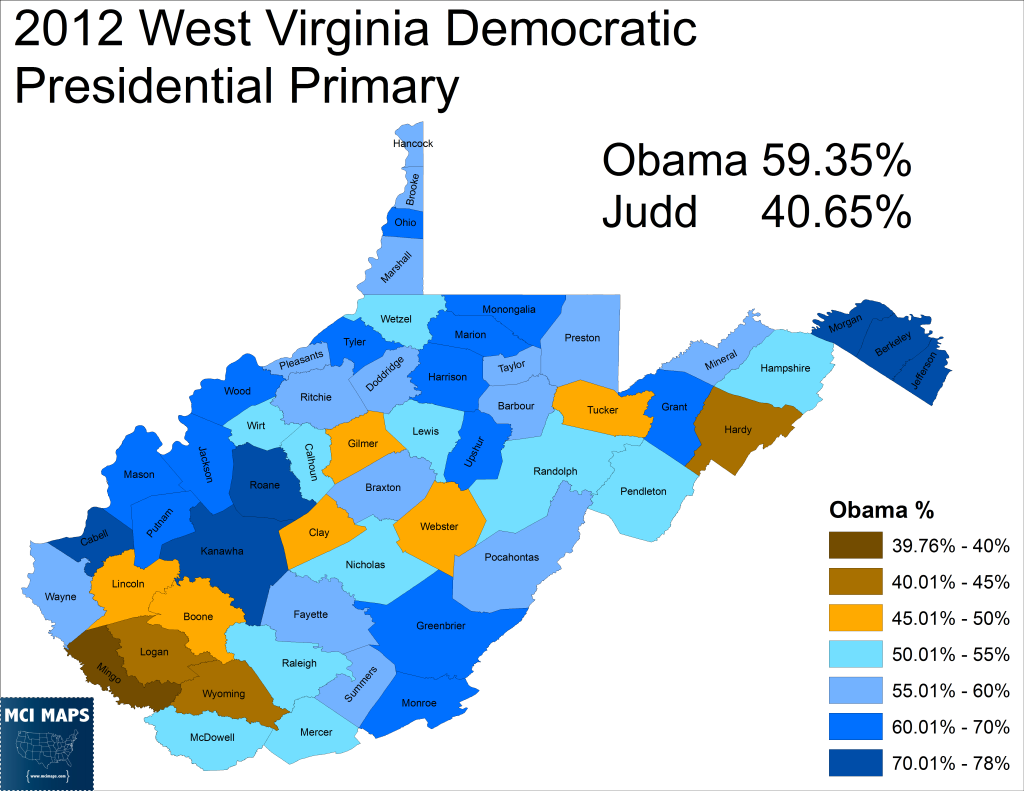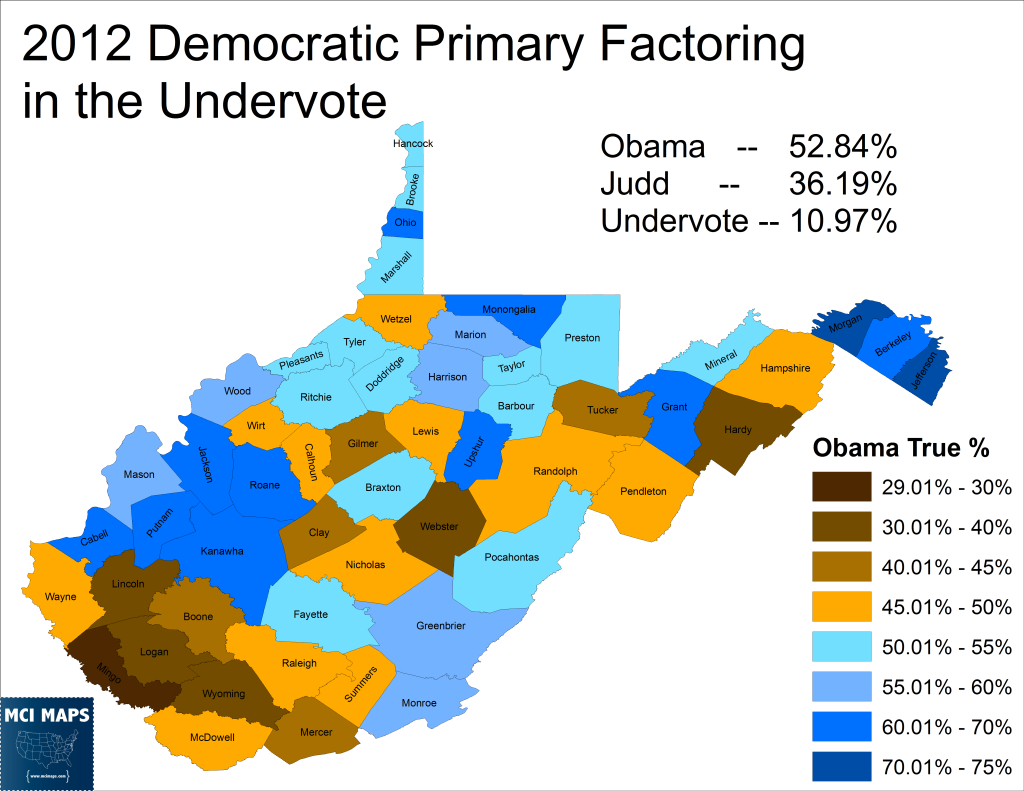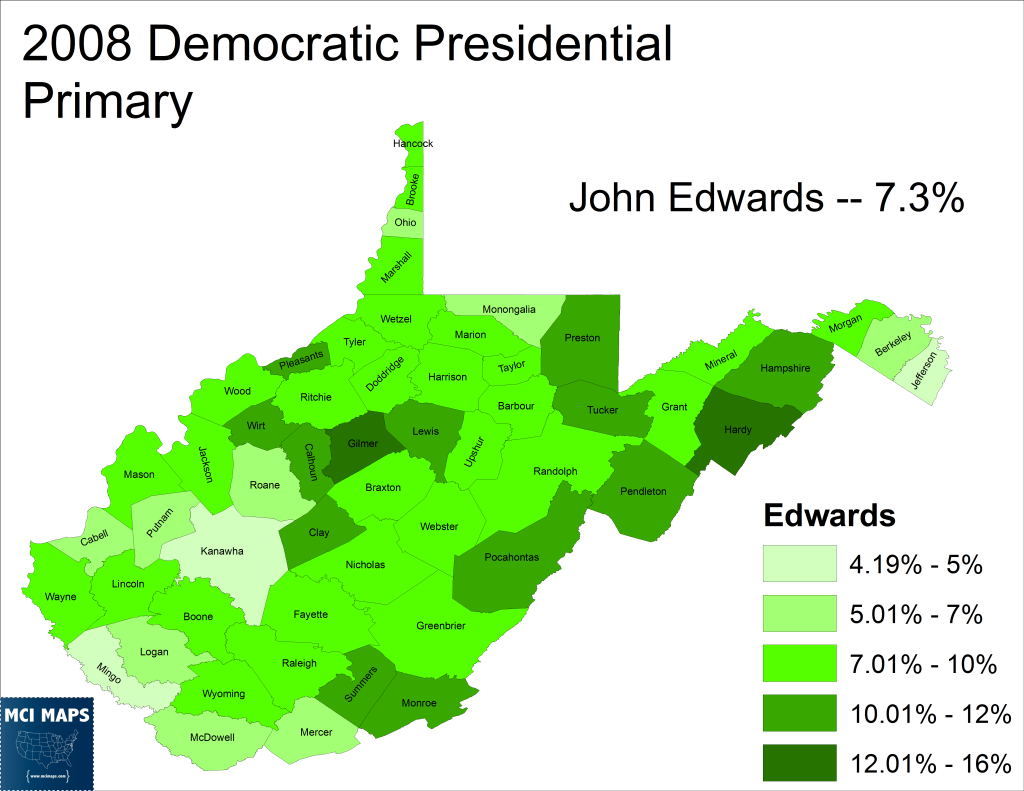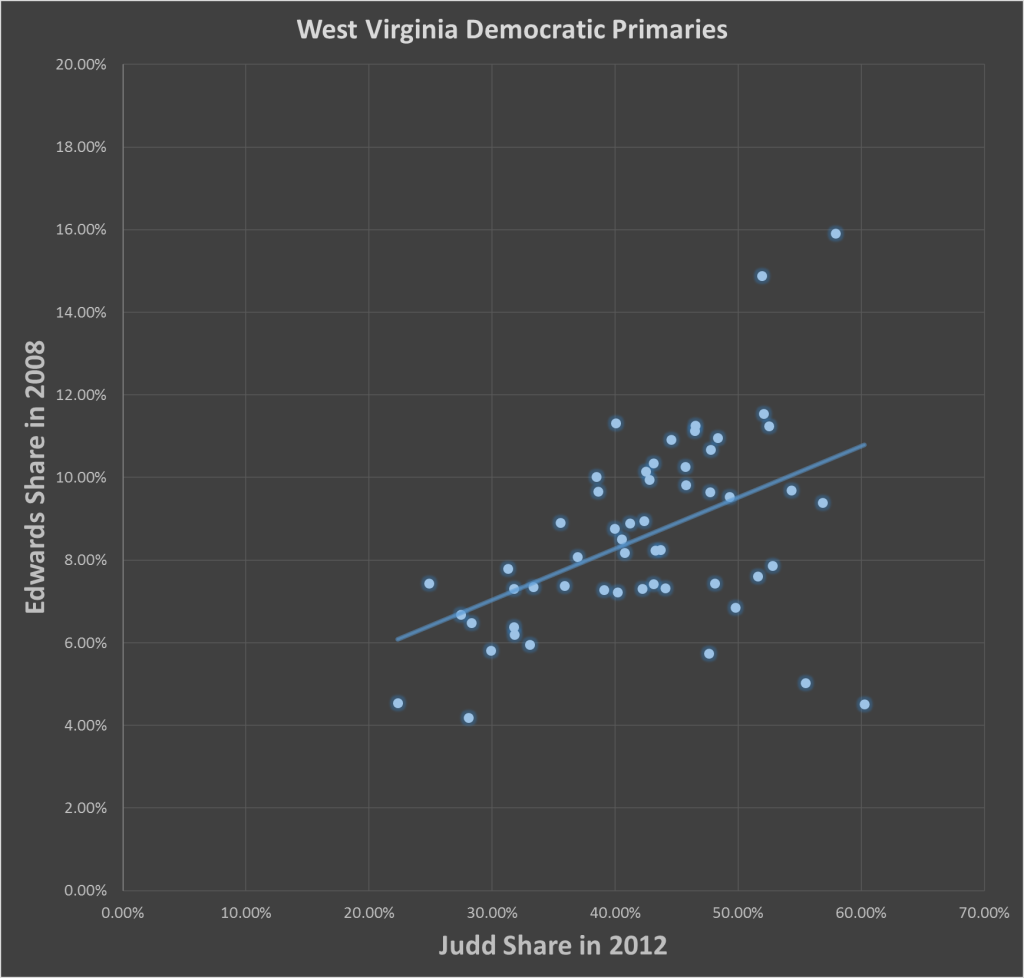West Virginia and the Democratic Presidential Primary
Today is the West Virginia Presidential Primary. With Trump having secured the Republican nomination and already leading polls in the state by wide margins, most attention is focused on the Democratic side. While Clinton still stands poised to win the Democratic nomination, Sander’s is favored in West Virginia. The demographics of the state are good for Sanders. The Democratic base is overwhelmingly white, less educated and working class. Clinton’s best white support comes from the affluent and suburbanites, of which there are few in the state. With the demographic layout of the state, Sanders could receive a solid double-digit win. The situation mirrors the state’s role in the 2008 Democratic primary, when Clinton beat Obama by over 40% despite having little chance at securing the Democratic nomination by that point in the cycle. While polls have it close, I honestly wouldn’t be shocked by a double digit Sanders win.
What I am going to be watching in West Virginia, however, is not the margin between Clinton and Sanders. Instead, I am going to be watching the protest vote.
The Protest Vote
While watching the Presidential Primaries, one thing that has been a focus of mine is the “protest vote” in the contest. This refers to Democrats casting ballots for candidates other than Clinton or Sanders. In some cases this meant voting for O’Malley, or uncommitted, or any slew of unknown candidates that got on the ballot in different states. In many states the protest vote is small, but in some, especially in Appalachia and the South, the conservative Democrats (who largely vote Republican in general elections) opt to show their displeasure by not voting for either Clinton, who has run by tying herself to Obama, or Sanders, who leans very far to the left on policy. In states with open primaries, where people can chose a side to vote on despite registration, the undervote is low thanks to conservative Democrats opting to vote the GOP ballot. In states either closed, or semi-closed (forcing registered Democrats to only vote the Dem ballot side) the undervote has risen notably.
States like Oklahoma, Arkansas, Louisiana, and North Carolina had laws that ensured any registered Democrat had to vote that ballot, resulting in large protest votes. In Florida, the northern panhandle, the conservative, rural Democrats also cast large votes for O’Malley to show their protest of the top choices. States like Mississippi and Georgia were open, allowing conservatives to vote the GOP side. While South Carolina is closed for Democrats, many of the conservatives there switched their registration long ago as the state became a GOP stronghold long before Alabama, Georgia, Mississippi, Louisiana, and Tennessee.
West Virginia and Kentucky both force their Democratic members to vote on the Democratic ballot, leaving open the possibility for an especially large undervote in a region that has rapidly moved away from Democrats due to conflicts over coal. West Virginia’s registration is heavily Democratic, yet the state legislature recently went into Republican hands and Obama lost every county in 2012. The Democrats of the state are moving further away from the national party over energy issues and the overall conservative culture of the region. In 2012, Obama only got 59% of the primary vote against an opponent who was in prison at the time of the election.
Obama actually lost several counties, many being major coal counties in the south.
The results are worse when thinking about it in context of other elections that same day. Democrats were showing up for their state and federal primaries. Their was a Gubernatorial primary where the Incumbent Democratic Governor had token opposition. However, 20,000 more people voted for that race than for the Presidential primary. In several counties, more than 15% of the ballots cast for Governor were left blank for President.
The largest share of blank ballots came from the southern counties.
If we look at the total votes cast in the Gubernatorial primary, and Obama’s votes by that, his share of the vote for people voting on Democratic ballots falls closer to 52%.
This is just an exercise to show that even more Democrats didn’t like Obama than the initial primary votes suggest. This is likely to be a major factor in the undervote in this year’s primary.
Clinton is running as a defender of Obama’s policies. In addition, her comments on the coal industry will not help her in the region. Sander’s has general demographics on his side, but he is a major environmentalist as well and his policy positions conflict with coal country. The protest vote could well top 10%. In 2008, when Clinton was dominating the primary, John Edwards, who had been out of the race for months, still got 7%.
Edwards’ best showings weren’t the southern counties that rejected Obama, Clinton did well there last time. However, she will likely see some of the biggest swings against her in the southern coal counties. Some of Edwards’ best counties did, however, give good showings to Judd in 2012.
I also expect those southern coal counties to see a much larger protest vote than they did in 2008.
In addition to the protest vote we could see an even larger undervote. Their is a heavily contested Gubernatorial Democratic Primary and many voters showing up for that to likely select Jim Justice, a COAL BUSINESSMAN as the Democratic nominee. The pro-coal Democrats voting for Justice are more likely to leave their Presidential ballot blank.
The vote will be interesting. While Sanders is likely to pick up the win, I think its safe to say the general election in West Virginia will be Trump territory.

